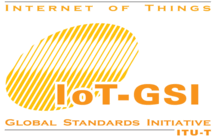Marco Carugi, one of ZTE's standards "agents," is presiding over the fourth day of the Fourth Meeting of the Global Standards Initiative on the Internet of Things.
In case it has escaped your attention, this is a short description of the activity, from the GSI-IoT Web page:
"The Global Standards Initiative on Internet of Things (IoT-GSI) promotes a unified approach in ITU-T for development of technical standards (Recommendations) enabling the Internet of Things on a global scale. ITU-T Recommendations developed under the IoT-GSI by the various ITU-T Questions – in collaboration with other standards developing organizations (SDOs) – will enable worldwide service providers to offer the wide range of services expected by this technology. IoT-GSI also aims to act as an umbrella for IoT standards development worldwide."
One of the recurring topics on the agenda of past meetings, this week's meeting, and the focus of the first two hours of today, is the definition of the Internet of Things. The definition, and my opinion about the work invested on this topic, have evolved from my post about it last June. It would not be appropriate for me to share/post the current ITU draft definition before it is published by the IoT-GSI group, so I will limit my remarks to my views on the process and one of the core decisions regarding the scope of IoT.
The tenacity and dedication demonstrated by the contributors is impressive. The systematic decomposition of each and every word used in the definition, the possible qualifiers and interpretations of these terms has produced dozens of internal documents and figures, tracing who contributed what. This traceability is fundamental to all standards processes. What impresses me is the way these engineers have systematically attacked so many fuzzy concepts using a language that is, for nearly all those involved, not their mother tongue (English).
One delicate point on which there has been some debate (though far less than I anticipated) is if the IoT definition will include in its scope (in addition to physical things), something called "virtual things." These virtual things are files, such as eBooks, photographs, songs and 3D objects, that can be stored, processed and accessed.
In the past I felt that virtual things should not be in scope but, after listening to contributions, I can see an argument for the IoT to include virtual things. Virtual things will not have attributes such as physical dimensions, communications protocols nor will they be able to measure the physical world. And, physical things will not have a digital dimension (kb of storage). Both virtual and physical things have attributes such as the date and time of creation, an author or manufacturer and an authority to which we will address requests. And, perhaps the most important attribute of all, the physical world might be modified as a result of communication with either virtual and physical things.
The inclusion of virtual things is important in my mind, but it is not the most hotly debated assertion. Other topics such as if there are, and how to describe, the "personalities" attributable to things is even more unclear and sensitive.
Being an observer of these discussions certainly has confirmed my interest in developing, as early as possible, an Augmented Reality glossary of terms on which SDOs will be able to form their own definitions. It has also opened my eyes to the careful editing process defined by the ITU for its work. Results of this process will be published later this year and I hope, for the sake of progress towards standards development, that the definitions will stand the test of time.
